What is the Huge Flower That Only Blooms Once a Year? Discover the Enchanting Phenomenon
When you think of a flower that blooms only once a year, it might sound like something out of a fairy tale. Yet, there’s a real-life wonder, often drawing crowds from all over just to catch a glimpse. The gigantic Amorphophallus titanum, also known as the corpse flower, is famous for its rare and spectacular bloom. This unique plant boasts the largest unbranched inflorescence in the world, standing tall and proud.
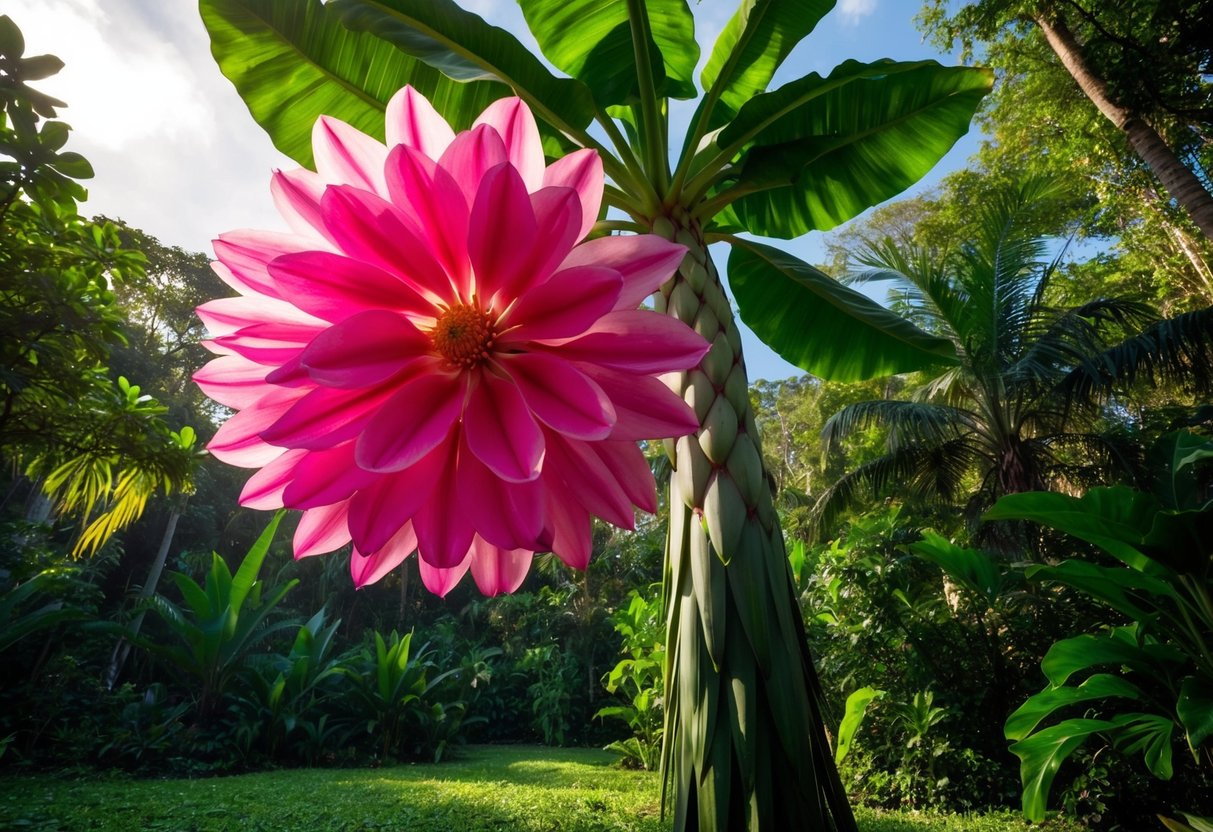
You might be curious about the name “corpse flower.” It’s named for the powerful odor it emits, often likened to rotting flesh. This scent is a clever strategy to attract the insects that help pollinate the flower. Despite the smell, witnessing this bloom can be a once-in-a-lifetime experience, drawing people to botanical gardens whenever the event happens.
The anticipation surrounding its bloom makes the corpse flower an enchanting topic for plant enthusiasts and curious onlookers alike. These flowers can take several years to blossom, adding to the excitement when they finally reveal their enormous, striking petals. Such rare natural events capture the imagination and inspire a deeper appreciation for the wonders of the plant world.
The Corpse Flower Phenomenon

The corpse flower, known scientifically as Amorphophallus titanum, is a fascinating plant. It is famous for its large smell and towering size, becoming an attraction when it blooms.
Biology and Botany of Amorphophallus Titanum
The corpse flower is one of the largest and most intriguing plants in the world. Its scientific name is Amorphophallus titanum. You can find it in the rainforests of Sumatra. The plant has a complex flowering structure, featuring a tall central spike known as the spadix. This is surrounded by a large petal-like structure called the spathe.
What’s unique is its size. The inflorescence is the largest unbranched one in the plant kingdom, often reaching up to eight feet. The plant draws energy from a large underground stem called a corm. This corm helps the plant store nutrients, making it essential for its growth.
The Lifecycle of a Giant Bloom
The corpse flower has a peculiar and lengthy life cycle. It blooms only once every 7-10 years, which makes each flowering event special. When it decides to bloom, it releases a smell resembling rotting flesh. This smell is crucial as it draws pollinators like beetles and flies.
A bloom lasts only 24 to 48 hours. During this time, the plant has to make the most of its chance to attract pollinators. It must be efficient. After the bloom, the plant returns to its usual leafy state, storing energy through its corm for its next rare blooming cycle.
Habitats and Ecology
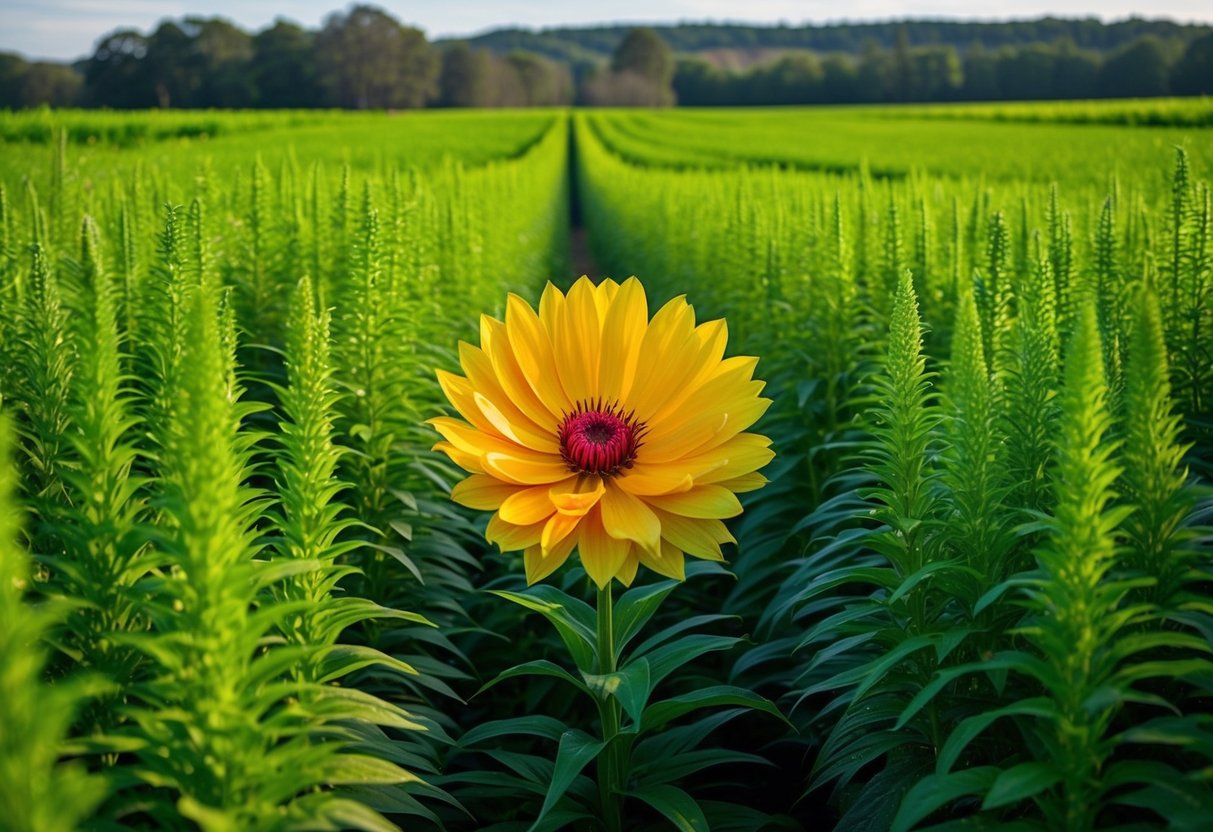
In the world of unique flowers, certain species have fascinating habitats and remarkable pollination processes. You will find them in specific environments that support their growth and survival.
Native Regions and Environment
Many unique flowers that only bloom once in a while, like the Amorphophallus titanum, are native to the rainforests of Sumatra, Indonesia. In these dense, humid forests, the plants find the ideal conditions to thrive. The rich soil and abundant water supply help them grow despite their short blooming period.
In these rainforests, the temperature stays warm, and the canopy cover creates a unique light condition. This is crucial because these plants need high humidity and indirect sunlight to ensure their growth. Being aware of these environmental needs can save you time if you’re trying to cultivate similar plants in your garden.
Pollination and Ecological Coexistence
Pollination of these flowers is as unique as the flowers themselves. For instance, Amorphophallus titanum, also known as the corpse flower, relies on a specific group of pollinators. Its strong odor attracts flies and carrion beetles. These insects are drawn to the smell, which mimics rotting flesh, fooling them into thinking they will find food.
The plant’s structure traps the insects just long enough to pick up pollen before releasing them. This process helps ensure the plant’s reproductive success. You see, in this intricate ecosystem, each participant plays a vital role, making the life cycle of these rare flowers possible. While these blooms are fleeting, their ecological interactions are anything but.
Conservation Efforts
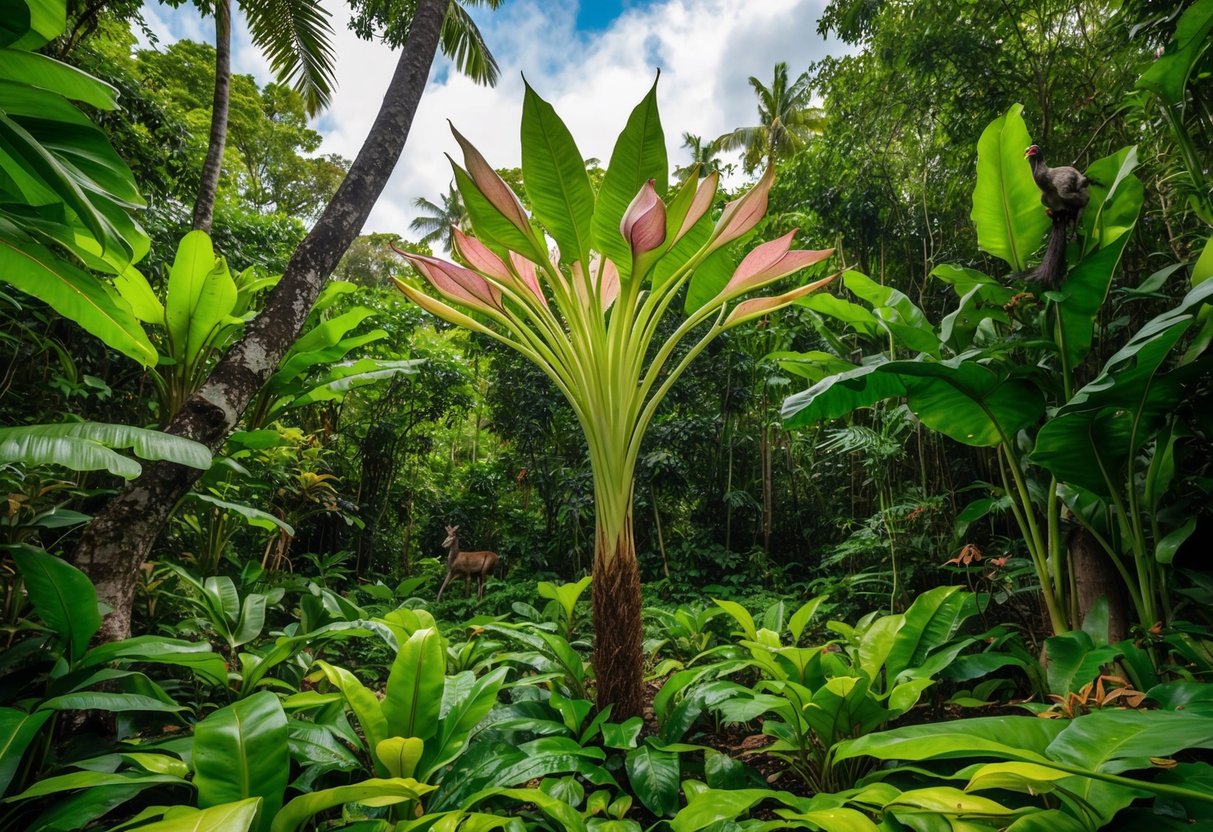
Conserving the rare flowers that bloom once a year involves protecting their habitats and educating the public. Botanists and conservationists play a crucial role in preserving these unique plants for future generations.
Protecting the World’s Largest Flower
Endangered plant species, like the night-blooming cereus, require specific conservation efforts. Places like the Tohono Chul garden in Tucson work hard to protect these plants. By maintaining suitable habitats and cultivating plants under controlled conditions, they support their survival.
Organizations such as the IUCN contribute to conserving these species by assessing their status and encouraging protective measures. Efforts focus on safeguarding these blooms to ensure they continue to thrive in their natural environments.
Botanic Gardens and Educational Outreach
Botanic gardens play a significant role in conservation. Gardens like the Royal Botanic Gardens, Chicago Botanic Garden, and New York Botanical Garden help educate the public about the importance of preserving endangered plants.
Educational programs and displays teach you about the delicate balance of ecosystems. By showing these rare blooms in a controlled environment, gardens raise awareness about the threats these plants face. They also inspire action and support for conservation through workshops, tours, and interactive exhibits.
Cultural Impact and Public Fascination
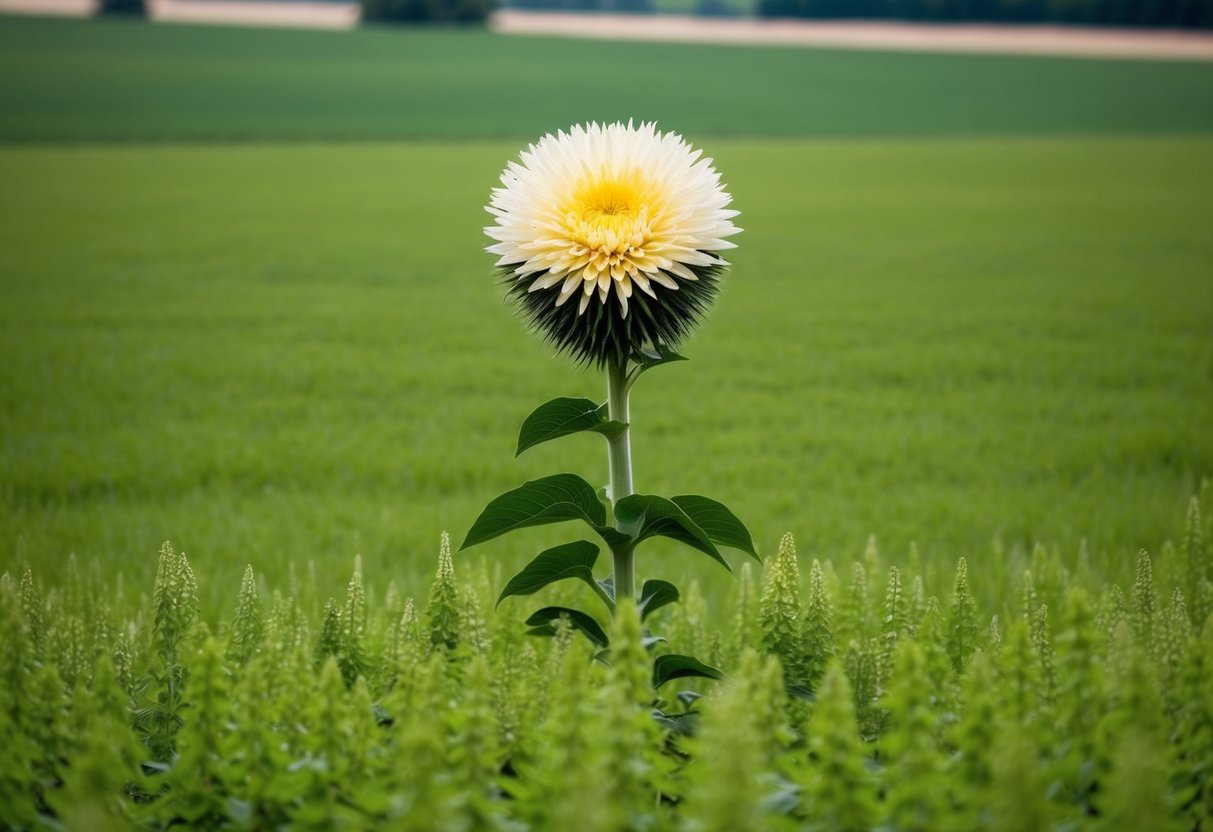
The fascination with rare flowering plants is widespread. These extraordinary blooms often capture the public’s imagination and invite intrigue. Exhibition venues around the world draw crowds eager to witness these spectacular events.
Media and Public Engagements
When a rare flower like the corpse plant blooms, it quickly becomes a media sensation. People from all over learn about its unique smell and massive size through news segments and viral social media posts. These blooms often feature in documentaries exploring unusual natural phenomena.
Fans share their experiences across platforms, creating a sense of community. You’ll find special events held at places like Kew Gardens, where people gather for educational talks and guided tours about these captivating plants. Sign up for these events to enjoy an interactive learning experience.
Exhibitions and Displays Worldwide
Botanic gardens, such as the Princess of Wales Conservatory, create impressive displays to showcase these rare blooms. When a flower like the corpse plant blooms, it attracts thousands of visitors to see it. These exhibitions often include facts about the plant’s lifecycle and its ecological importance.
You might also see related artifacts and interactive displays that engage visitors of all ages. Visits to these exhibitions provide a chance to appreciate the intricate beauty of these unique plants. Whether you’re exploring a botanical garden in your area or planning a trip to famous locations, there’s plenty to inspire your love for nature.
Unique Characteristics
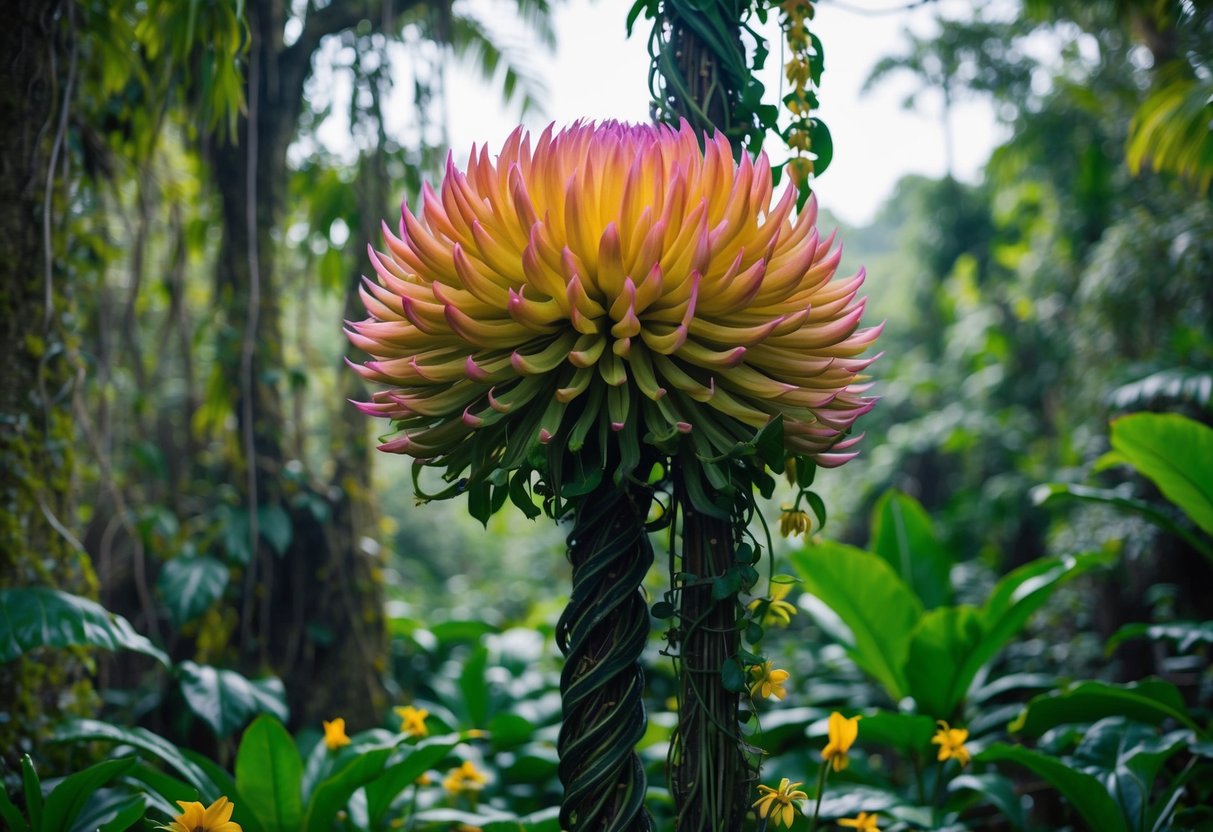
In the fascinating world of rare flowers, some only bloom once a year and possess truly unique features. These plants are known for their intriguing aromas and record-breaking traits.
The Aroma of Attraction
One of the most fascinating aspects of these flowers is their unusual aroma. The corpse flower, also known as the carrion flower, emits a strong, stinky scent that resembles rotting flesh. This smell, while unpleasant to humans, is key to the plant’s pollination strategy.
The scent is produced by a compound called dimethyl trisulfide. This chemical mimics the odor of decaying organic matter, attracting pollinators like flies and beetles. These insects are drawn to the scent, thinking they will find food, but instead, they help with pollination. This unique method of attracting pollinators ensures that the flower can reproduce effectively.
Record-Breaking Plant Traits
When it comes to plant records, few can rival the astonishing size of the corpse flower. This plant boasts the largest unbranched inflorescence in the world, a feature that sets it apart from other species. The towering structure of the flower can reach impressive heights, sometimes up to 10 feet tall.
This remarkable size is not just for show; it plays a role in the plant’s survival. The height allows the flower to stand out and catch the attention of potential pollinators from a distance. Combined with its stench, the flower becomes an unforgettable spectacle. Despite its size and smell, the bloom is short-lived, making its rare appearance a significant event for botanists and nature enthusiasts alike.







